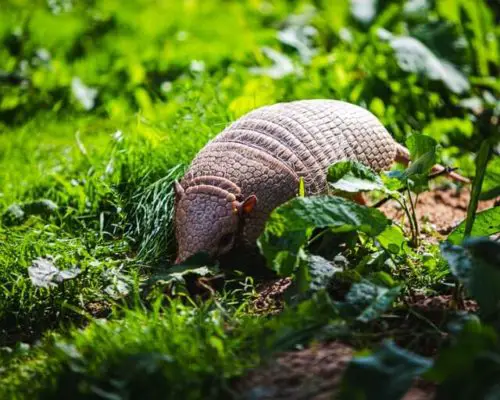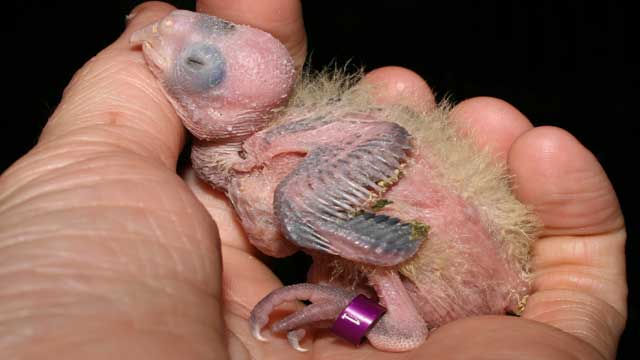Can you eat Armadillo? This is what we all want to know, and you will find that answer here! But first let’s take a quick look at what type of animal we’re dealing with. Armadillos are an unusual animal for many reasons. Not only is the armadillo a notable creature because of its armor-like shell, but they also happen to be tasty and edible! This article will discuss if armadillo meat is safe to eat, how to cook armadillo meat and if it causes leprosy.
The armadillo is a mammal, in the same family as anteaters and sloths. It has a long prehensile tail that helps them to climb trees or dig their burrows. They are native to South America but have been introduced into many other countries around the world including Texas and Florida.
So to answer the question, can you eat armadillo? Yes you can! Armadillos are used as food in some areas of Central America and South America. In Oaxaca, Mexico, for example, armadillo is often eaten with rice and beans on special occasions such as weddings or family gatherings.
How Do You Cook an Armadillo?
How do you cook an armadillo, you might ask? Well first off they need to be skinned before cooking because their shells are very tough! You can use any kind of kitchen knife but make sure that your blade has been sharpened. This way you will get a cleaner cut while skinning the animal. A cleaner cut will prevent chunks of meat from being taken out during the process.
Once all four legs have been cleaned and the shell has been removed, slice them into pieces about one inch thick across both sides. You can cut smaller pieces by using either scissors, if cutting by hand, or an electric knife.
The next step is to season the meat with salt and pepper, then brown it in a skillet or pot over medium heat for about five minutes on each side until all sides are golden-browned (or crispy). You can also use other spices such as garlic powder if you want!
The final thing that needs to be done before eating your armadillo dish of choice would be cooking up some rice pilaf. This will help soak up any excess fat from the cooking process. It will also give you an excellent flavor profile when paired together at dinner time!
You may also choose to fry up your armadillo. A nice breading of flour, salt and pepper will help seal in the meat’s natural juices. Cajun seasoning is also a great option, this can be added to your flour mixture so the seasoning is evenly distributed. Think of it in the same way you might prepare fried fish 🙂
Do Texans Eat Armadillos?
I lived in Texas for over 30 years and personally I never ate any armadillo meat. However I do believe some Texans choose to eat armadillo meat. Mostly we would see them walking across the road, or possible already roadkill.
Even though eating armadillo may not be super popular in Texas, there are many other things that are. Animals like rattlesnake, goat, deer, rabbit, squirrel and bison are all very tasty meat sources for a Texan. I’m not sure what squirrel tastes like though, I’ve never tried that one. But I’ve feasted on all the others and they’re quite good!
Can You Get Leprosy from Eating Armadillo?
It has been rumored that you can get leprosy from eating armadillo meat. Is this true? According to the World Health Organization, there is no evidence that armadillo meat causes leprosy.
The WHO states: “There are many myths and misconceptions about the transmission of diseases from animals to humans.” Generally if an animals meat is cooked properly, there normally isn’t any risk of contracting a disease. So taking into account what was said above, I think one could safely assume an animal such as armadillo does NOT cause Leprosy. But let’s dig a little deeper…
A research team from Colorado State University conducted a study on armadillo meat and found that it is safe to eat. They tested the animals for leprosy, salmonella bacteria (which causes food poisoning), E coli bacteria (which cause diarrhea or other intestinal problems) as well as parasites such as roundworms.
The senior author of the study, John Spencer, was pretty impressed as to what they found. You can discover more of their findings in the article linked above. But here is a direct quote from associate professor John Spencer on the question, “Can you eat armadillo?”
“Your risk of picking up the disease from eating well-cooked meat is almost zero.” -John Spencer
Although he does give some good advice. He states that leprosy has been known to circulate from animals to humans and vice verse. So Spencer highly recommends wearing gloves when cleaning armadillo and make sure the meat is cooked until it is well-done!
What is the Nutritional Value of Armadillo Meat?
Many people are unaware of the nutritional value that armadillo meat can provide. Armadillo meat is a decent source of protein, iron and zinc. It also contains more vitamin B12 than beef or pork as well as Vitamin A which helps to maintain healthy skin and eyesight.
Armadillo meat does contain some risky elements such as saturated fat, cholesterol and sodium. However these are found in fairly moderate amounts. In a 1 ounce portion of cooked armadillo there is approximately 45 calories made up of 26% fat, 0% carbohydrate and 74% protein.
So as you can see, armadillo meat is a great source of protein and iron. It also contains some other vitamins that are important for maintaining healthy skin and eyesight. It may also be an excellent option for those of you following the ketogenic lifestyle!
Is it Legal to Hunt Armadillo?
It is legal to hunt armadillo in the United States. Hunting armadillo is legal in most states, but laws for hunting vary by state, so make sure before going out into your yard with a shotgun or rifle looking around!
You should also be aware about any local ordinances which may prohibit killing animals within city limits. For instance Texas Parks and Wildlife classify armadillo as a “non-game animal“. This simply means there isn’t a “closed season” for these animals. They can be hunted or shot provided it is by lawful means and on private property.
The Wildlife Code of Missouri states that if an armadillo is damaging your property, it is legal to trap or shoot them. So I think it’s safe to say most states do not have any law in place to prevent you from hunting armadillo. Just make sure it’s on private property and done using the proper safety guidelines.
Can You Eat Armadillo? – Wrapping Things Up
Just to recap what we’ve learned… Armadillos are a small mammal native to South America but have been introduced into many other areas around the world including Texas and Florida. They are also very easy to hunt due to their relatively small size. This makes them more accessible for hunters who want to give their children the experience of hunting as well.
The nutritional value of armadillo meat is high, which means it provides a lot of protein and other nutrients. Not only this, but if prepared properly and cooked well-done, there should be no fear of contracting leprosy as some people suggest.





